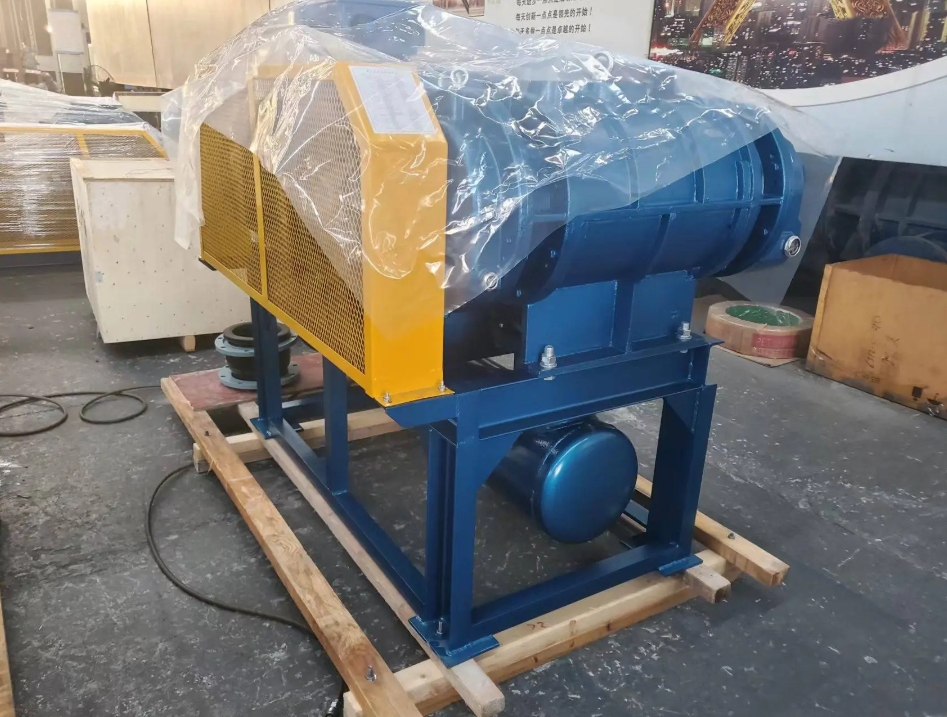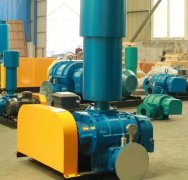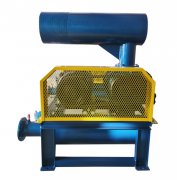Reasons for insufficient wind pressure of Roots blower
The reasons for insufficient wind pressure in Roots blowers may involve multiple aspects, and the following is a detailed analysis of these reasons:
1、 Insufficient force
Insufficient force is an important reason for insufficient air pressure in Roots blowers, mainly manifested as insufficient air volume in Roots blowers. The following are specific factors that may cause insufficient air flow:
1. Improper selection of fan model: If the Roots blower model is selected too small, its output air volume may not be sufficient, resulting in insufficient pressure. At this point, it is necessary to re select the fan and replace it with a suitable one.
2. Motor wiring issue: If the motor wiring is incorrect, the Roots blower may experience reverse rotation, causing the exhaust outlet to turn into an intake, thereby reducing the air volume. In this case, it is necessary to change the wiring method to ensure the normal operation of the fan.
3. Insufficient or slipping belt tension: After prolonged operation of the Roots blower, the belt tension may decrease or slip, resulting in a decrease in fan speed and insufficient air volume. At this point, it is necessary to adjust the belt tension or replace the appropriate belt.
4. Blockage of fan inlet: If the inlet of the Roots blower is blocked, the intake air volume will decrease, resulting in insufficient exhaust air volume. In this case, it is necessary to clean the obstacles at the air inlet to ensure smooth flow.
5. Increase in fan clearance: After prolonged use of Roots blowers, the clearances between impellers, between impellers and wall panels, and between impellers and the casing may increase. The increase in gap will lead to severe gas reflux and increased internal leakage, resulting in a decrease in fan pressure. At this point, it is necessary to replace the impeller or adjust the clearance of the Roots blower.
2、 Insufficient reaction force
Insufficient reaction force is also an important reason for insufficient wind pressure in Roots blowers, mainly manifested as reduced sealing performance. The following are specific factors that may lead to a decrease in sealing performance:
1. Pipeline rupture or leakage: If the pipeline of the Roots blower ruptures or leaks, it will cause pressure loss, thereby reducing wind pressure. At this point, it is necessary to inspect and repair the pipeline to ensure confidentiality.
2. Seal damage: If the seals of Roots blower (such as bearing seals, packing seals, etc.) are damaged or aged, it can also cause leakage and pressure reduction. In this case, it is necessary to replace the damaged seal.
3、 Other factors
In addition to the above two main reasons, there are also some other factors that may cause insufficient wind pressure in Roots blowers:
1. Inlet filter blockage: The function of the inlet filter is to filter the air entering the fan, preventing impurities and particulate matter from entering the interior of the fan. If the filter is not cleaned or replaced for a long time, it will cause blockage, reducing the air intake of the fan and resulting in insufficient air pressure. At this point, it is necessary to regularly check the condition of the filter and promptly clean or replace it.
2. Damage to impeller and bearings: The impeller and bearings of Roots blower are key components for the normal operation of the fan. If the impeller is damaged or the bearings are severely worn, it will cause unstable operation of the fan, thereby affecting the air pressure. At this point, it is necessary to regularly inspect and replace damaged impellers or bearings.
3. Motor problem: The motor is the power source of the Roots blower. If there is a problem with the motor (such as insufficient power, unstable voltage, etc.), it will cause insufficient air pressure in the blower. At this point, it is necessary to check the status of the motor and replace or repair it in a timely manner.
4. Design and installation issues: The design and installation quality of Roots blowers can also affect the wind pressure of the blower. If the design of the machine casing is improper or there are errors during installation, it will result in insufficient air pressure of the fan. Therefore, it is necessary to choose a reputable manufacturer to purchase a reliable Roots blower, and strictly follow the instructions for installation and debugging during the installation process.
5. Gas characteristics and environmental conditions: In some special cases, the characteristics of the gas (such as density, viscosity, etc.) and environmental conditions (such as temperature, pressure, etc.) can also affect the wind pressure of the Roots blower. For example, when the gas density is high or the ambient temperature is high, the wind pressure of the fan may be affected. At this point, it is necessary to choose the appropriate Roots blower model based on actual usage, and pay attention to changes in environmental conditions during use, making timely adjustments and maintenance.
In summary, the reasons for insufficient wind pressure in Roots blowers may involve multiple aspects, including insufficient force, insufficient reaction force, and other factors such as clogged inlet filters, damaged impellers and bearings, motor problems, design and installation issues, as well as gas characteristics and environmental conditions. When using Roots blowers, it is necessary to regularly inspect and maintain the equipment, promptly identify and solve problems to ensure the normal operation and effectiveness of the blower.



